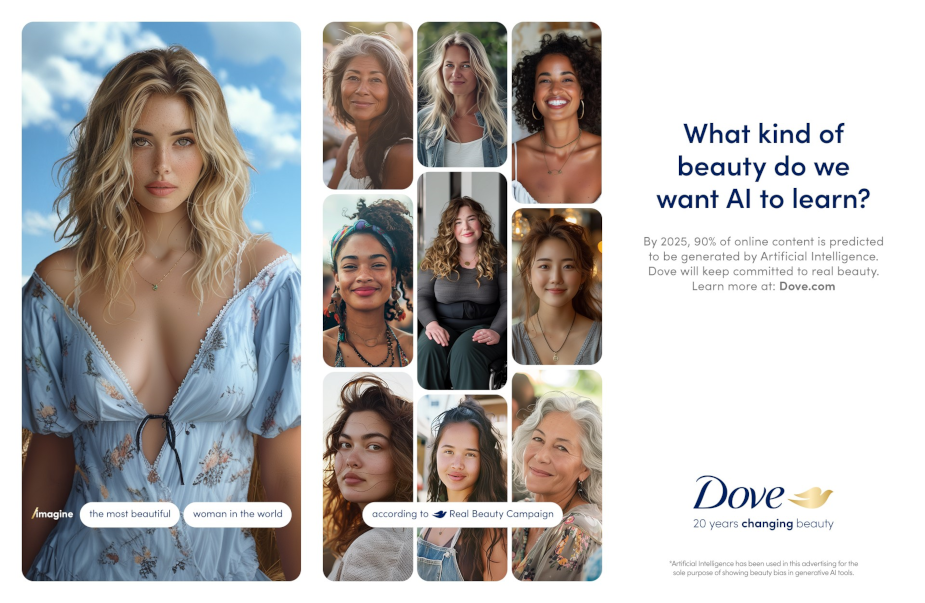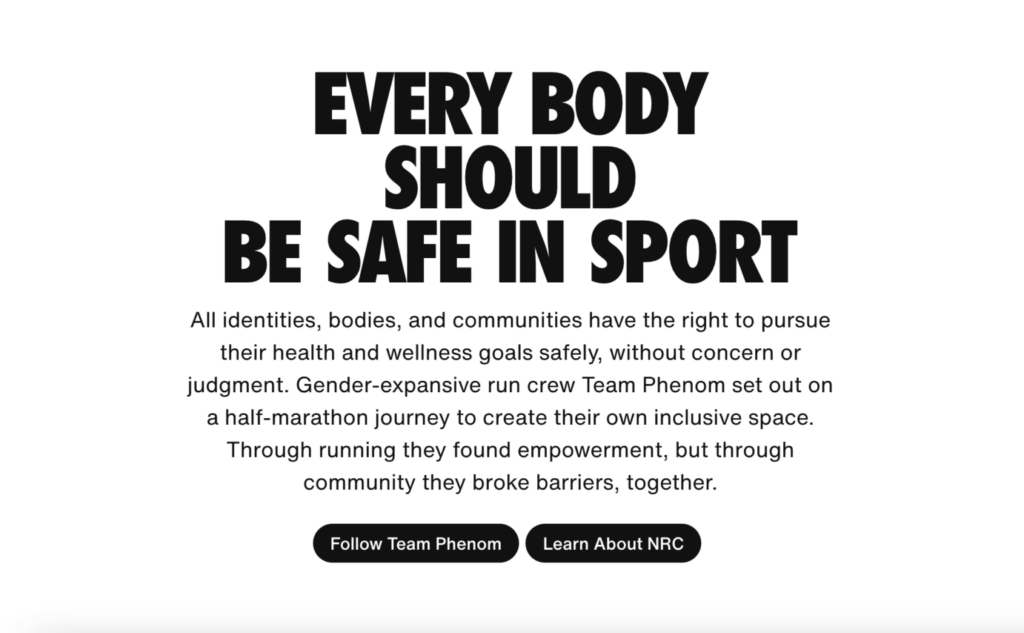
Inclusive Advertising Are Winning Hearts—and Market Share. Here’s Why
Walk into any boardroom and you will hear a buzzword echoing everywhere — inclusive advertising. But this isn’t just a corporate feel-good strategy or seasonal trend tossing around during pitch meetings. Inclusive advertising has become a meaningful change, transforming brand identities, sparking loyalty, and, let’s be honest, helping brands rake in more revenue.
From building deeper emotional connections to standing out in a crowded marketplace, inclusive marketing creates a massive impact. However, despite its feel-good reputation, inclusion is emerging as a powerful business strategy. Major brands have shifted their strategy, not just to avoid backlash, but to stay culturally relevant and competitive.
Representation is important, and if it is genuine, brands can easily profit from it. To better understand, let’s unpack how and why inclusive advertising is winning both hearts and market share in today’s hyper-aware consumer world.
What is inclusive advertising, and why do consumers care?
Being socially responsible isn’t the only aspect of inclusive advertising. Instead, it’s essential for business to stay relevant. As today, consumers are looking for more than just eye-catching imagery and memorable taglines. They are looking for real experiences, real people, and authentic stories.
True inclusive marketing goes beyond just ticking the diversity checklist. In terms of race, ethnicity, gender identity, sexual orientation, body type, age, ability, and more, it’s about portraying the diverse world we live in. But even deeper, it’s about telling authentic stories that resonate with lived experiences without tokenizing or stereotyping.
The most effective brands are not just highlighting diversity but embedding inclusivity into the DNA of their campaigns, messaging, and creative storytelling. With this, they want consumers to pay attention, and they are listening. Millennials and Gen Z are no longer interested in showy gestures, but they are looking for brands who are genuine.
A new global study led by Saïd Business School proves that inclusive advertising and positive gender portrayals can drive sales and business growth. Bottom line? Representation isn’t just a cultural expectation. It’s a growth driver.
From screens to checkout, let’s talk about the ROI of representation
There’s a direct line between inclusive storytelling and bottom-line success. Why? Because representation drives connection, and connection drives conversions. When people see themselves in your brand’s story, they’re more likely to engage, trust, and buy.
Let’s look at a few brands that nailed it:
Dove’s “Real Beauty” campaign
Dove confronted the rise of AI-generated beauty standards by juxtaposing an AI-created “ideal” with real, diverse women. This campaign sparked meaningful conversations about authenticity in the digital age, reinforcing Dove’s commitment to celebrating real beauty

Nike’s “Be True” pride campaign
Celebrating the LGBTQ+ community, Nike’s “Be True” campaign featured gender-neutral apparel designed by LGBTQ+ artists. The initiative underscored Nike’s dedication to inclusivity and authentic representation.

The backlash against performative inclusion
Let’s keep it real, though: consumers can smell performative inclusion from a mile away.
Is it stereotyping, tokenism, or slapping a rainbow on your logo for Pride Month without real commitment? It won’t fly. Instead, it can backfire terribly. Consider Coca-Cola’s AI-generated holiday ad from November 2024. Meant to modernize its festive campaigns, it backfired by feeling cold and impersonal.
The takeaway? Authenticity isn’t optional. You can’t fake inclusivity with a glossy campaign. It must be baked into your brand’s core.
Today’s audiences are more informed, more vocal, and less forgiving. They’re not just observing your ads—they’re keeping an eye on your actions. Which means brands must support their messaging with tangible actions, such as inclusive hiring practices, diverse creative teams, moral collaborations, and corporate cultures that truly embody the values they promote.
It’s not just about looking inclusive—it’s about being inclusive, inside, and out.
Why specificity wins: Connecting through real stories
Inclusive advertising isn’t about trying to be everything to everyone—it’s about telling real stories that reflect specific communities. The most effective advertising strategies establish a human connection rather than generalizing. The message resonates more deeply and fosters trust when brands take the effort to learn about their consumers and relate to their experiences.
In 2024, Starbucks Colombia launched its “Ads for Good” campaign, featuring local artists to promote diversity and inclusion. While praised for its positive message, it faced criticism for lacking authenticity and a clear call to action. The campaign highlighted the importance of genuine efforts in inclusive advertising to avoid being seen as performative.
And the numbers speak for themselves. Gen Z and Millennials are 23% more likely to make a purchase from brands that use inclusive advertising. While 49% of Black consumers like brands that accurately portray their culture, 71% of LGBTQ+ consumers are more inclined to interact with advertisements that reflect their identity.
In a world that’s growing more diverse, specificity isn’t a limitation—it’s a strength.
So, what makes an inclusive ad actually work
Real inclusive advertising isn’t about casting diverse faces or adding a catchy tagline—it’s about intentionality. The most impactful campaigns start behind the scenes, with diverse creative teams shaping stories that feel genuine and nuanced. Cultural competence plays a huge role, too.
So, what Makes an Inclusive Ad Work. It starts with being built by diverse creative teams and grounded in real cultural context. The best ones celebrate joy—not just struggle—maintain consistency year-round and communicate with honesty and transparency.
But it doesn’t stop there. The best inclusive ads normalize everyday life—joy, love, ambition, laughter—without always centering on pain or conflict. Because people want to feel seen in the full spectrum of their experiences. And while perfection isn’t expected, consistency and honesty are.
Inclusivity can’t be a seasonal strategy—it must be a long-term commitment. And that commitment builds trust.
The future is personalized—and human
The possibilities for inclusive storytelling are expanding rapidly with the development of AI, AR/VR, and real-time customization tools. Brands now can create adaptive creative—ads that dynamically shift based on who’s watching. From language and tone to imagery and context, everything can be tailored to feel personal.
Imagine, one viewer sees an interracial family. Another sees a plus-size Latina business owner. A third sees a non-binary teen at a pride parade. Same campaign, different lenses—each one genuine and relevant. However, brands cannot afford to lose the human touch as technology advances. Trendy filters and gaudy tools won’t be the future of inclusive advertising.
Empathy, intentionality, and giving each person a sense of being seen in meaningful ways will be key components.
Cut to the chase
Inclusive advertising isn’t a side hustle or a passing trend — it’s the future. It builds trust, drives connections, and grows your audience when done with purpose and care.
The future? Real, diverse, human campaigns that truly reflect the world we live in. Ready to make your brand truly inclusive? Start by listening, learning, and leading with authenticity.

